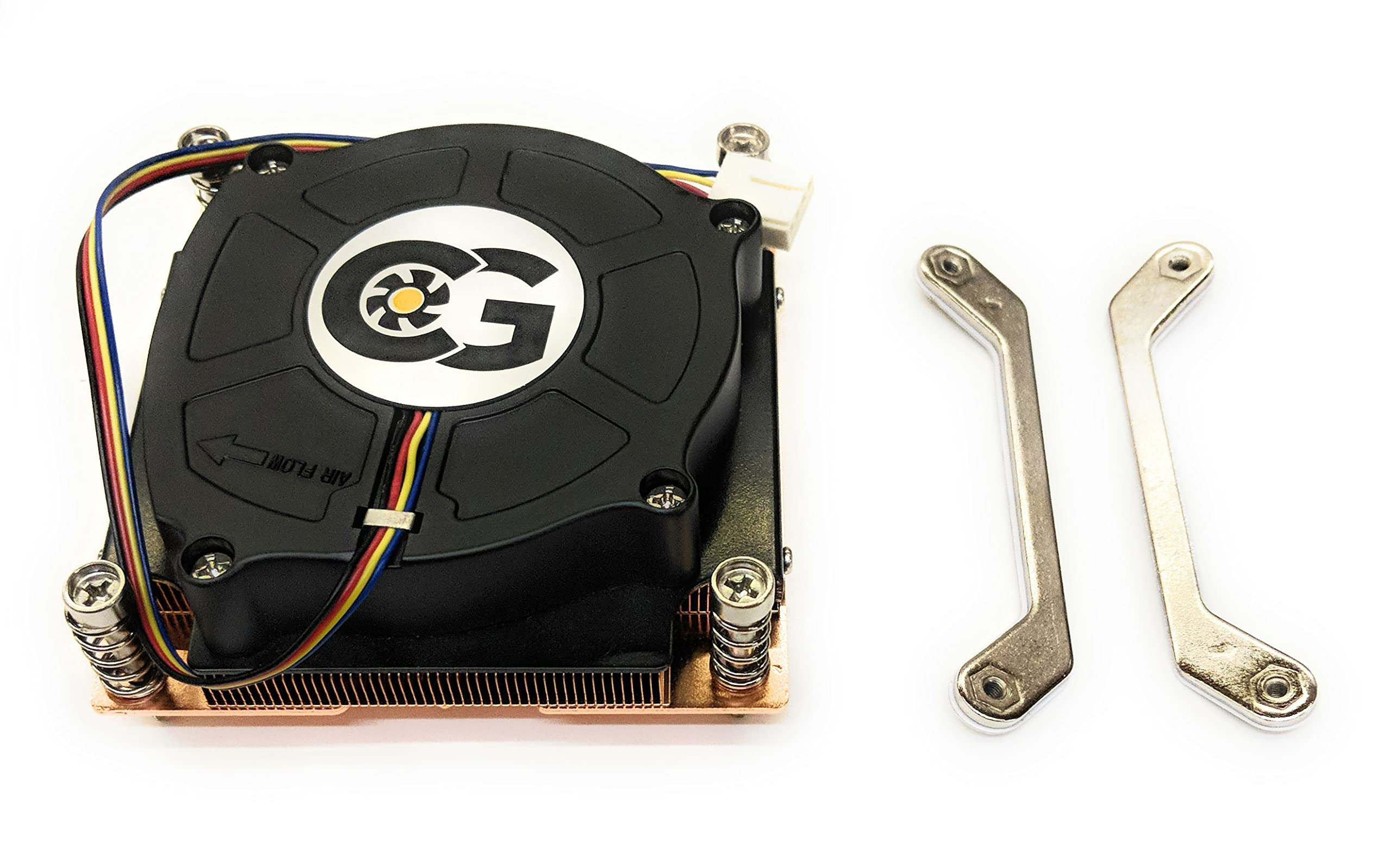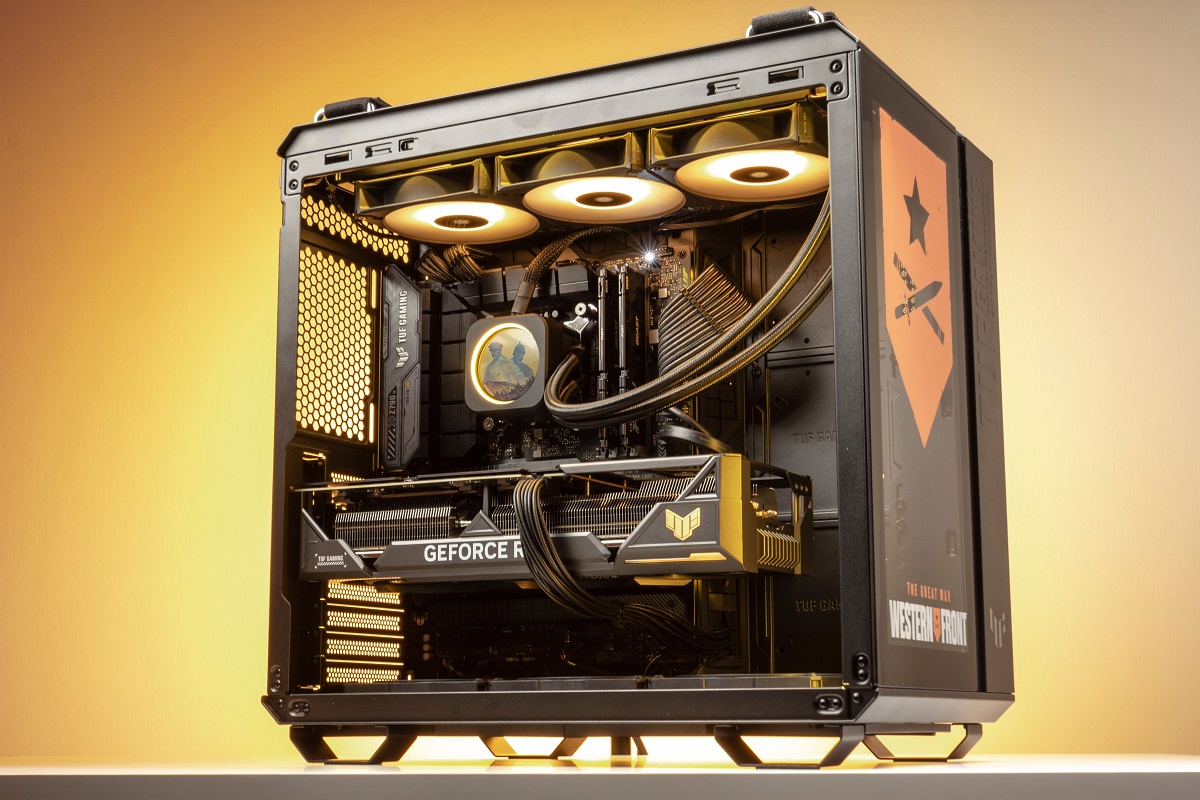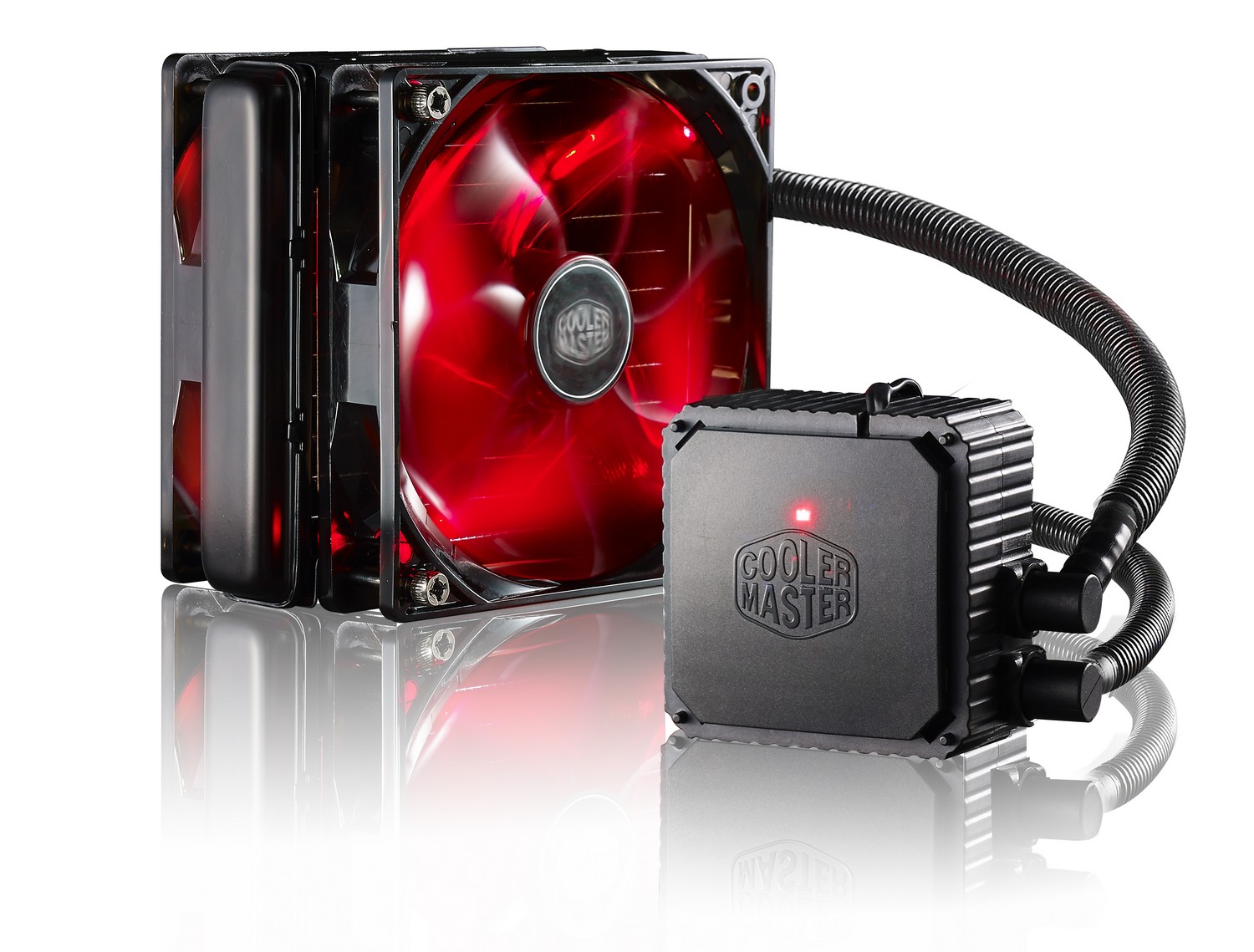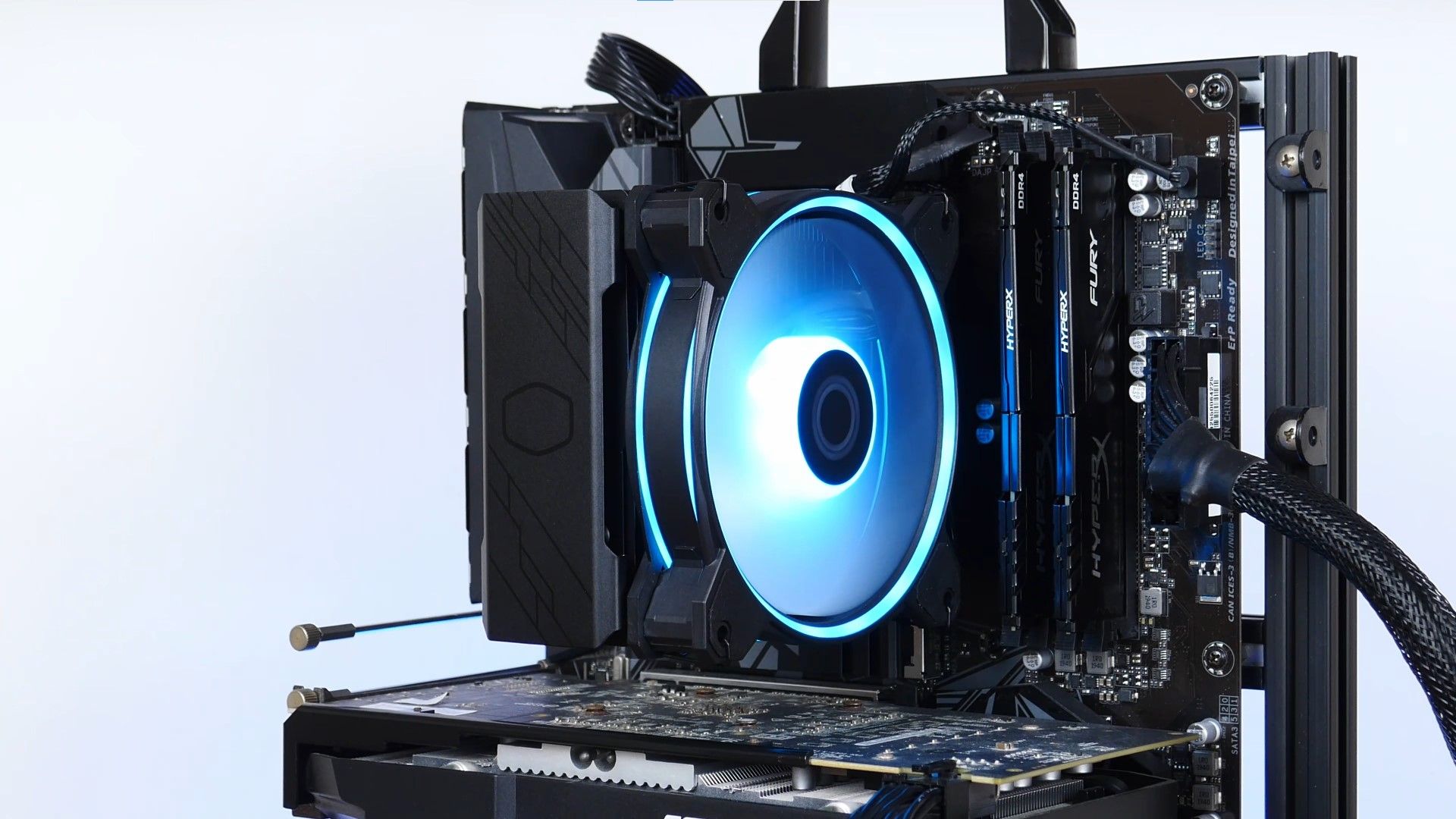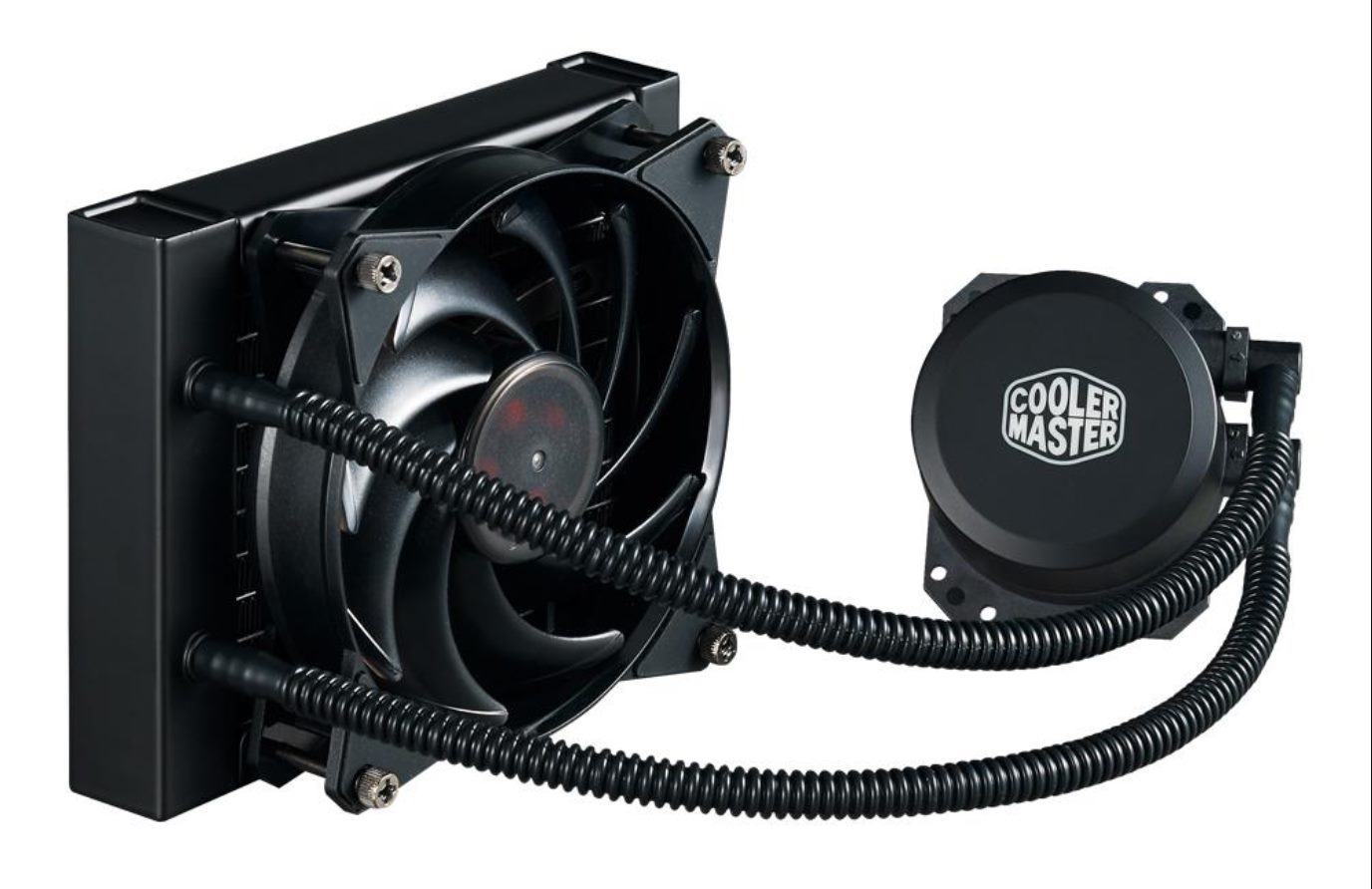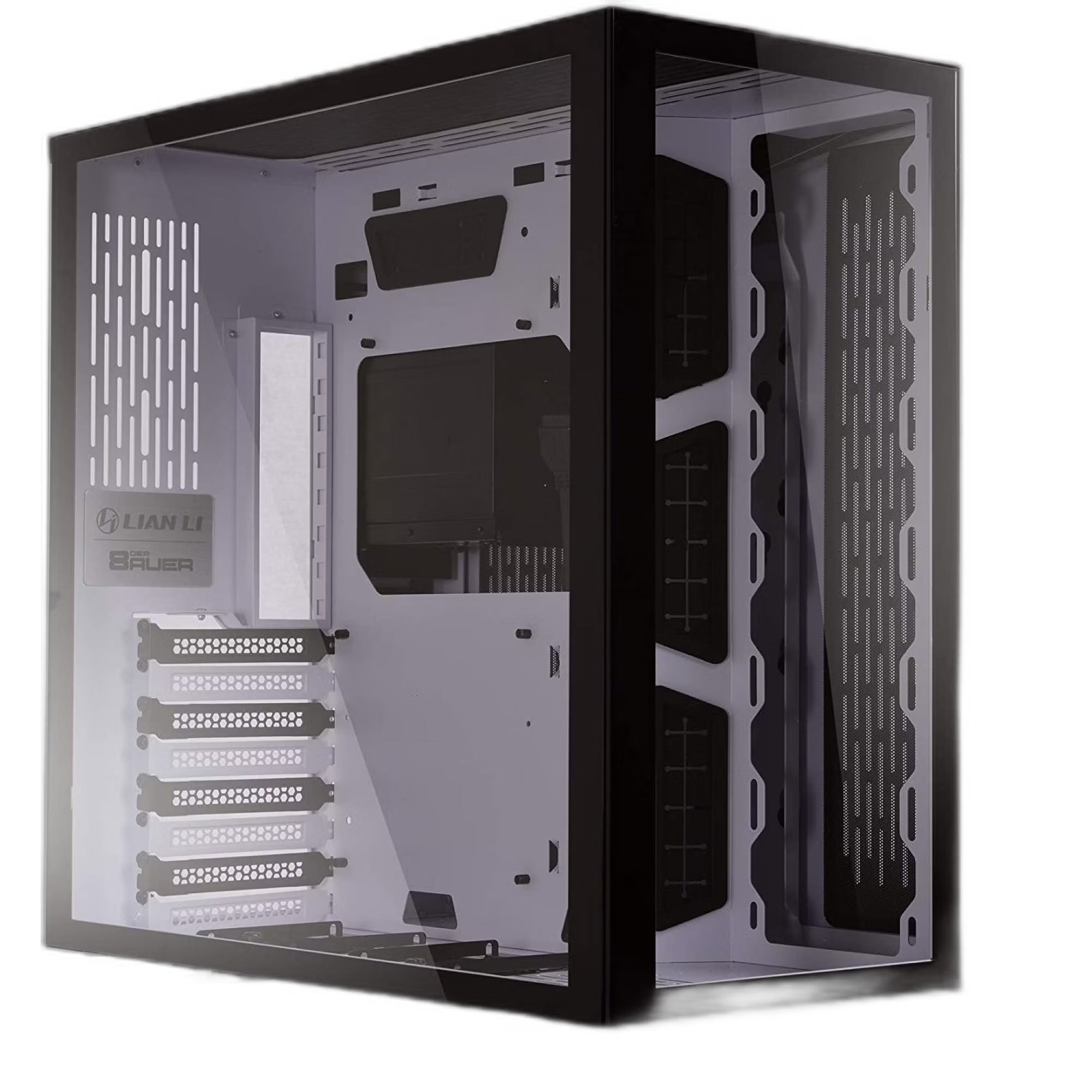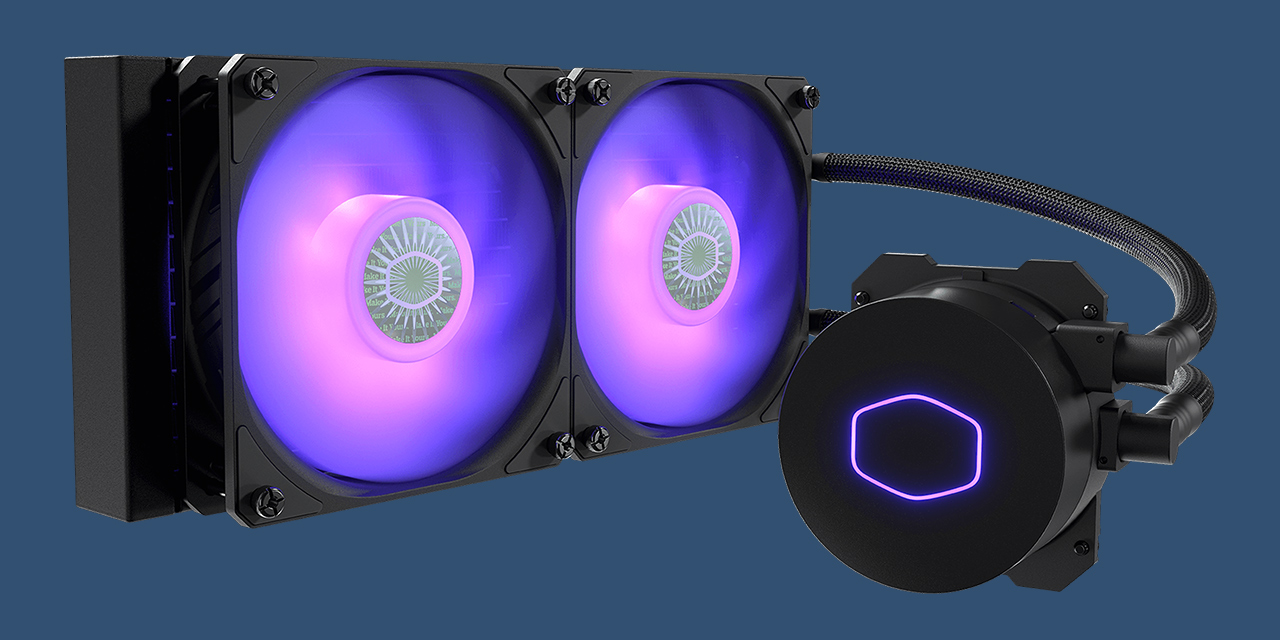Introduction
When it comes to building a high-performance PC, one of the key considerations is the choice of PC case. A dual chamber PC case is a type of PC case that offers several advantages over traditional single chamber cases. In this article, we will explore what a dual chamber PC case is and discuss the benefits they provide for gamers and PC enthusiasts.
A dual chamber PC case, as the name suggests, is designed with two separate compartments – one for the motherboard and other components, and another for the power supply and storage devices. This innovative design separates the heat-generating components from the rest of the system, allowing for improved airflow, better cable management, and enhanced aesthetics.
In recent years, the demand for dual chamber PC cases has grown significantly among gamers and PC enthusiasts. This is due to the various advantages they offer, including superior cooling, reduced noise levels, and cleaner cable routing. Additionally, the separate compartments provide a visually appealing look and make it easier to showcase RGB lighting and custom water cooling setups.
In the following sections, we will delve deeper into the benefits of using a dual chamber PC case and explore the different compartments and cooling options available in these cases. Whether you’re a professional gamer looking to optimize your system’s performance or a PC enthusiast aiming for a clean and organized build, understanding the advantages of a dual chamber PC case is essential in making an informed decision for your next build.
What Is a Dual Chamber PC Case?
A dual chamber PC case is a type of computer case that consists of two separate compartments designed to house different components of a PC. In a traditional single chamber case, all the components are housed in a single space. However, in a dual chamber case, the motherboard, CPU, and graphics card are usually placed in one compartment, while the power supply, storage devices, and cables are situated in another compartment.
The main purpose of having separate compartments is to improve the overall functionality and aesthetics of the PC. By isolating the power supply and storage devices from the heat-generating components, a dual chamber PC case allows for better airflow and cooling. This design helps dissipate heat more efficiently, reducing the risk of overheating and ultimately improving the performance and lifespan of the system.
Furthermore, the separation of components in a dual chamber case also aids in cable management. With the power supply and cables located in a separate compartment, it becomes easier to route and organize cables neatly. This not only improves the overall look of the PC but also helps with maintenance and future upgrades.
In terms of aesthetics, dual chamber PC cases offer a sleek and clean appearance. With the motherboard and key components showcased in one compartment, and the power supply and cables hidden away in another, the overall look of the PC is visually appealing. Many dual chamber cases also feature tempered glass panels, allowing users to showcase their high-end components and eye-catching light setups.
Overall, a dual chamber PC case provides several advantages over traditional single chamber cases. The separation of components improves airflow and cooling, enhances cable management, and offers a visually pleasing build. Whether you’re a gamer, content creator, or a PC enthusiast, opting for a dual chamber PC case can significantly enhance the performance, aesthetics, and functionality of your PC.
Benefits of Using a Dual Chamber PC Case
Using a dual chamber PC case offers numerous benefits for gamers and PC enthusiasts alike. Let’s explore some of the key advantages:
Improved Airflow and Cooling: One of the main advantages of a dual chamber PC case is the improved airflow and cooling it provides. By separating the heat-generating components such as the CPU and graphics card from the power supply and storage devices, the flow of air within the case is optimized. This helps dissipate heat more effectively, preventing thermal throttling and ensuring better overall performance.
Noise Reduction: With the power supply and storage devices located in a separate compartment, a dual chamber case helps reduce noise levels. The power supply generates noise as it operates, but having it isolated in its own chamber significantly dampens the sound. This makes dual chamber PC cases an excellent choice for gamers and content creators who value a quieter work environment.
Easier Cable Management: Cable management is often a challenge in PC building, but dual chamber cases make it much easier. With a separate compartment dedicated to routing and hiding cables, users can achieve a cleaner and more organized build. This not only enhances aesthetics but also makes maintenance and future upgrades simpler.
Better Aesthetics: Dual chamber PC cases offer a visually appealing build. The separation of components allows for a cleaner and more streamlined look. Furthermore, dual chamber cases often feature tempered glass panels that showcase the high-end components and vibrant RGB lighting setups, creating a stunning visual display.
Enhanced Component Lifespan: Due to the improved airflow and cooling, dual chamber PC cases can help extend the lifespan of components. By maintaining ideal operating temperatures, the risk of overheating and component failure is significantly reduced. This is particularly beneficial for those running high-performance systems or overclocking their hardware.
Efficient Heat Isolation: Dual chamber cases isolate the power supply and storage devices from the other components, preventing them from affecting each other’s thermal conditions. By eliminating heat transfer between compartments, the overall heat management of the system is greatly improved, leading to better overall performance and reliability.
Overall, the benefits of using a dual chamber PC case are significant. Improved airflow and cooling, reduced noise levels, easier cable management, better aesthetics, enhanced component lifespan, and efficient heat isolation make dual chamber cases an excellent choice for any PC enthusiast seeking a high-performance and visually impressive build.
Improved Airflow and Cooling
One of the key advantages of using a dual chamber PC case is the improved airflow and cooling it provides. The separation of components into different compartments allows for better heat dissipation and optimal airflow within the case.
In a traditional single chamber case, all the components are housed in a single space, which can hinder airflow and lead to hot spots. With a dual chamber case, the heat-generating components such as the CPU and graphics card are typically located in one compartment, while the power supply and storage devices are situated in another. This separation helps to isolate the heat sources and prevents them from affecting the rest of the system.
By keeping the heat-producing components separate, a dual chamber case allows for more efficient cooling. The airflow within the compartment containing the motherboard and graphics card can be focused on directing cool air towards those components, optimizing their performance. At the same time, the power supply and storage compartment can have its own airflow design, ensuring that the heat generated by these components is effectively expelled.
Additionally, the dual chamber design allows for better organization and placement of fans and cooling solutions. The separate compartments can be equipped with their own sets of fans, strategically positioned for maximum airflow and efficient heat dissipation. This arrangement helps to minimize the risk of thermal throttling and ensures that all components are operating within their optimal temperature ranges.
Furthermore, a dual chamber case often features dedicated cooling options for liquid cooling setups. Liquid cooling solutions, such as all-in-one (AIO) coolers or custom water cooling loops, can be easily installed in the designated compartment. This allows for effective cooling of the CPU and graphics card, providing superior temperature control and reducing the risk of overheating.
Overall, the improved airflow and cooling capabilities of a dual chamber PC case play a crucial role in maintaining the stability and performance of the system. By separating the heat-generating components from the power supply and storage devices, as well as providing dedicated cooling options, dual chamber cases ensure that your PC remains cool even during intense gaming sessions or demanding workloads.
Noise Reduction
Noise reduction is another significant benefit of using a dual chamber PC case. The separation of components into different compartments helps to minimize noise levels and create a quieter computing environment.
The power supply is one of the main sources of noise in a PC. In a traditional single chamber case, the power supply is positioned close to the other components, and the noise it generates can easily be transmitted to the rest of the system. However, in a dual chamber case, the power supply is isolated in its own compartment. This separation effectively isolates and dampens the noise produced by the power supply fan and motor, resulting in a quieter overall system.
Furthermore, the storage devices, such as hard drives and SSDs, also generate noise during operation. By housing them in a separate compartment, a dual chamber case provides an additional barrier to prevent noise transmission. The noise produced by the spinning hard disks or the read/write operations of the SSDs is contained within the storage compartment, reducing its impact on the other components and further contributing to noise reduction.
In addition to isolating noise sources, dual chamber PC cases often incorporate design features that minimize vibrations. Hard drive bays and storage compartments are often equipped with vibration dampening mechanisms to reduce the noise caused by hard disk vibrations. This helps to create a quieter environment, particularly for users who prioritize a noise-free computing experience.
Furthermore, the improved airflow and cooling capabilities of a dual chamber case can also contribute to noise reduction. By maintaining lower operating temperatures, the cooling fans can operate at lower speeds, resulting in reduced noise levels. Additionally, the compartmentalized design allows for better positioning and control of fans, optimizing their performance and ensuring quieter operation.
Overall, a dual chamber PC case provides significant noise reduction benefits. The isolation of the power supply and storage devices, along with the integration of vibration dampening mechanisms and optimized fan control, create a quieter computing environment. Whether you’re a gamer who wants to focus on immersive gameplay or a content creator who requires a quiet workspace, a dual chamber PC case can help you achieve a more peaceful and enjoyable computing experience.
Easier Cable Management
Cable management is an essential aspect of building a PC, and a dual chamber PC case makes this task much easier and more efficient. The separation of components into different compartments allows for better organization and routing of cables, resulting in a cleaner and more organized build.
In a traditional single chamber case, cables from the power supply, storage devices, and other peripherals can become tangled and obstruct the airflow. This not only hinders the overall aesthetics but also makes future maintenance and upgrades more challenging. However, in a dual chamber case, the power supply and storage devices are typically placed in a separate compartment, away from the motherboard and other components.
The separate compartment dedicated to cable management in a dual chamber case provides ample space for routing and hiding cables. This helps to eliminate cable clutter and makes for a neater overall build. Additionally, many dual chamber cases feature cable management features such as cable routing holes, Velcro straps, and predefined cable channels that allow for easy and clean cable management.
Furthermore, the separation of components allows for more efficient placement of cables. With the power supply located in a separate compartment, the main motherboard chamber remains unobstructed and provides more room for routing cables and connecting peripherals. This not only improves the aesthetics of the build but also enhances airflow and cooling, as cables are less likely to impede the flow of air within the case.
Another advantage of easier cable management in a dual chamber case is the ease of maintenance and future upgrades. With cables neatly organized and routed, it becomes simpler to identify and access specific cables for troubleshooting or component replacements. Additionally, when upgrading or adding new components, the organized cable layout makes it easier to connect and route the necessary cables, reducing the chances of accidentally damaging or disconnecting other components.
Overall, the dedicated cable management compartment and thoughtful design features of a dual chamber PC case greatly simplify the task of cable management. The separation of components and the provision of ample space for routing cables result in a cleaner and more organized build. Whether you’re a PC enthusiast or a first-time builder, a dual chamber case makes cable management a hassle-free and visually appealing process.
Better Aesthetics
In addition to improving functionality, a dual chamber PC case offers enhanced aesthetics for your build. The separation of components into different compartments creates a clean and streamlined look, making your PC visually appealing.
With a dual chamber case, the main motherboard and graphics card compartment can be showcased while the power supply and storage devices are tucked away in a separate compartment. This segregation helps to eliminate the cluttered appearance often associated with traditional single chamber cases. It allows the key components to take center stage, creating a visually pleasing focal point.
Many dual chamber cases feature tempered glass panels that allow you to showcase your high-end components and intricate RGB lighting setups. The separate compartments allow for better lighting control and placement of RGB fans, strips, and other lighting accessories. This adds a vibrant and customizable aesthetic to your build, creating a visually stunning display that enhances the overall ambiance of your gaming or workspace.
The clean and organized layout of a dual chamber case also lends itself well to cable management, contributing to the overall aesthetics. With cables routed and hidden in the separate cable management compartment, the motherboard compartment remains free from cable clutter. This clean presentation not only improves the look of the build but also makes the internals more visible and accessible, allowing for easier maintenance and showcasing of components.
Moreover, the modular design of many dual chamber cases allows for easy customization and personalization. Removable drive bays, adjustable fan mounts, and customizable layout options give you the freedom to tailor the case to your desired aesthetic and functional preferences. Whether you prefer a minimalistic and sleek design or a bold and eye-catching build, a dual chamber case provides the flexibility to achieve your desired aesthetic vision.
Overall, the better aesthetics offered by a dual chamber PC case can elevate your build from a functional PC to a visual masterpiece. The separation of components, tempered glass panels, customizable lighting options, and cleaner cable management all contribute to a clean and visually stunning build. Whether you’re a gamer, content creator, or simply appreciate a well-designed PC, a dual chamber case can help you achieve the aesthetic appeal you desire.
Components Placement in Dual Chamber PC Cases
One of the defining features of a dual chamber PC case is the separation of components into different compartments. This design allows for efficient organization and placement of various hardware components. Let’s explore the typical placement of components in a dual chamber case:
Motherboard Compartment: The motherboard compartment is where the main processing unit and other essential components are located. It houses the motherboard, CPU, RAM, and graphics card. This compartment is designed to provide easy access to these key components and optimize cooling and airflow around them.
Power Supply Compartment: The power supply compartment is dedicated to housing the power supply unit (PSU). This compartment is often located at the bottom or rear of the case. Separating the power supply from the rest of the components helps to reduce heat buildup as well as minimize cable clutter. It also ensures that the power supply’s cooling mechanism operates independently, contributing to improved overall system cooling.
Hard Drive/SSD Compartment: Dual chamber cases often include a separate compartment for the storage devices, such as hard drives (HDDs) and solid-state drives (SSDs). This compartment is designed to safeguard the storage devices and minimize vibrations. It can also include dedicated slots or trays for easy installation and removal of drives.
Graphics Card Compartment: In some dual chamber cases, there is a specific compartment for the graphics card. This compartment provides extra space for larger graphics cards and allows for better airflow around the GPU. It can also feature additional cooling options, such as fan mounts or vents, to optimize graphics card cooling.
These compartments work together to create a clean and organized layout while improving cooling and cable management. The separation of components into different chambers not only enhances functionality but also contributes to the overall aesthetics of the build. This component placement in a dual chamber PC case ensures efficient use of space and allows for easy accessibility, customization, and maintenance of the system.
Motherboard Compartment
The motherboard compartment is a crucial section of a dual chamber PC case where the central processing unit (CPU), motherboard, RAM, and graphics card are placed. It is specifically designed to optimize cooling, accessibility, and functionality for these key components.
The motherboard is the main circuit board that houses the CPU, RAM slots, expansion slots, and other essential connectors. In a dual chamber case, it is usually placed in the primary compartment, providing easy access for installation and maintenance. The size and layout of the compartment are designed to accommodate standard ATX, micro ATX, or mini ITX motherboards.
The CPU, which is the brain of the computer, is installed on the motherboard. The motherboard compartment typically features a CPU cutout or a removable tray to allow for effortless CPU cooler installation and removal. This ensures proper contact between the CPU and its cooling solution, which could be an air cooler or a liquid cooling setup.
Adjacent to the CPU socket are the RAM slots, where the memory modules are inserted. The motherboard compartment provides ample space for installing and upgrading RAM modules without obstruction. This ease of access makes it hassle-free to expand the system’s memory capacity for better multitasking and overall performance.
Additionally, the graphics card or GPU is a crucial component for gaming and graphics-intensive applications. In a dual chamber case, the graphics card is typically positioned in the motherboard compartment. This allows for easy installation and removal, especially if the case provides extra clearance or dedicated PCIe slots for longer or bulkier graphics cards.
The motherboard compartment also incorporates various cooling options to optimize temperature management. It commonly features fan mounts or vents to direct airflow towards the CPU and GPU. This ensures proper cooling for these heat-generating components, preventing thermal throttling and maintaining optimal performance.
Cable management is another important consideration in the motherboard compartment. Dual chamber cases often include cable routing holes, grommets, or channels specifically designed to route and hide cables neatly. This results in a cleaner and more organized interior, minimizing cable clutter and maximizing airflow potential.
Overall, the motherboard compartment in a dual chamber PC case plays a critical role in housing and optimizing the performance of key components. It provides easy accessibility, efficient cooling, and supports various expansion options. Whether you’re a gamer, content creator, or PC enthusiast, the motherboard compartment in a dual chamber case ensures a solid foundation for building a high-performance and visually appealing system.
Power Supply Compartment
The power supply compartment in a dual chamber PC case is a dedicated space designed to house the power supply unit (PSU). This separate compartment provides several advantages for efficient cable management, improved cooling, and overall system performance.
The power supply is a critical component that provides electrical power to all the other components in the PC. By isolating it in its own compartment, it helps separate the power supply’s heat and potential electromagnetic interference (EMI) from other components. This segregation minimizes the impact of the power supply on other sensitive hardware, resulting in a more stable and reliable system.
In addition to isolating heat and EMI, the power supply compartment also facilitates superior cable management. The separate compartment provides ample space to route and hide power cables, ensuring a clean and organized build. This not only improves the overall aesthetics of the system but also enhances airflow within the main compartment by minimizing cable clutter.
Moreover, the power supply compartment often features design elements like cable routing holes, grommets, or dedicated channels that further assist in managing and concealing cables. These features allow for organized cable routing and make it easier to connect the power supply to the motherboard, storage devices, and other components.
Cooling is another aspect where the power supply compartment excels. By housing the power supply separately, it allows for independent thermal management and optimized airflow. The compartment may include vents or perforated panels to ensure proper air circulation around the power supply. This prevents the power supply from negatively impacting the overall system cooling and helps maintain stable operating temperatures.
Furthermore, the power supply compartment enables easier installation and removal of the power supply. It typically has its own access point or removable panels, allowing users to install or replace the power supply without having to maneuver around other components. This makes maintenance and upgrades simpler and more convenient.
Overall, the power supply compartment in a dual chamber PC case offers significant benefits. It enables efficient cable management, improves cooling by isolating heat and EMI, and provides a clean and organized build. With dedicated space for the power supply, users can enjoy better aesthetics, enhanced airflow, and easy access for maintenance or upgrades. Whether you are a gamer, content creator, or PC enthusiast, the power supply compartment in a dual chamber case ensures a reliable and visually appealing PC build.
Hard Drive/SSD Compartment
The hard drive/SSD compartment in a dual chamber PC case is a specific area designed to house the storage devices, such as hard disk drives (HDDs) and solid-state drives (SSDs). This dedicated compartment provides several advantages for proper storage, vibration reduction, and organization within the PC build.
Having a separate compartment for storage devices helps to isolate them from other components, minimizing potential vibrations. Hard drives, in particular, generate mechanical vibrations during operation, which can affect the performance and longevity of other sensitive hardware. The dedicated compartment helps dampen these vibrations, reducing the risk of negative impacts on overall system stability.
The compartment typically features dedicated bays or trays that securely hold the storage devices in place. This ensures that the drives are mounted correctly and stay in position, preventing any potential movement that could lead to data loss or damage to the drives.
In addition to vibration reduction, the hard drive/SSD compartment helps with cable management. Dual chamber cases often include cable routing mechanisms like cable routing holes, grommets, or channels specific to the storage compartment. These features allow for efficient routing and concealment of storage device cables, promoting a clean and organized interior.
The separate compartment also aids in temperature control for the storage devices. Airflow within the hard drive/SSD compartment can be optimized to prevent overheating by incorporating ventilation options, such as vents or fans. This helps to maintain optimal operating temperatures for the storage devices, ensuring their performance and longevity.
Furthermore, the hard drive/SSD compartment offers convenient accessibility for installation, removal, and maintenance of the storage devices. The dedicated bays or trays allow for easy insertion and removal of the drives, reducing the time and effort required for upgrades or data management.
Overall, the hard drive/SSD compartment in a dual chamber PC case provides significant benefits. It isolates storage devices to minimize vibrations, improves cable management, ensures proper temperature control, and enhances accessibility for maintenance and upgrades. Whether you need ample storage space for gaming or content creation, or simply want efficient organization of your data, the hard drive/SSD compartment in a dual chamber case provides a reliable and optimized solution for your storage needs.
Graphics Card Compartment
The graphics card compartment in a dual chamber PC case is a dedicated section specifically designed to house the graphics card or GPU. This compartment provides several benefits for efficient installation, enhanced cooling, and improved overall system performance.
The graphics card is a critical component for gaming and graphics-intensive applications. In a dual chamber case, the graphics card compartment is usually positioned in the main chamber, allowing for easy access and installation. It provides ample space and clearance to accommodate various sizes and configurations of graphics cards, including longer or bulkier models.
The placement of the graphics card in its own compartment offers improved cooling. The compartment is typically designed with ventilation options, including dedicated fan mounts or vents. These features facilitate proper airflow around the graphics card, promoting efficient heat dissipation and preventing thermal throttling. This helps to maintain optimal performance during demanding gaming sessions or GPU-intensive tasks.
The graphics card compartment also enables easy and convenient installation and removal of the graphics card. It may include features such as vertical GPU mounting brackets, PCIe slot holders, or tool-less retention mechanisms. These design elements simplify the process of inserting, securing, and removing the graphics card, making upgrades or maintenance hassle-free.
Moreover, the separate graphics card compartment can offer additional aesthetic benefits. It allows the graphics card to be showcased in its own dedicated space, creating a focal point for the system. Many dual chamber cases include tempered glass panels or other transparent materials that showcase the graphics card, adding a visually stunning element to the overall build.
In terms of cable management, the graphics card compartment helps route and conceal the required cables for the graphics card, such as power cables or SLI/Crossfire connectors. This prevents cable clutter in the main compartment and ensures a clean and organized interior. Proper cable management not only improves the aesthetics of the build but also enhances airflow and cooling efficiency.
Overall, the graphics card compartment in a dual chamber PC case offers several advantages. It provides easy installation and removal of the graphics card, enhanced cooling through optimized airflow, potential aesthetic enhancements, and efficient cable management. Whether you’re a gamer, content creator, or require high-performance graphics capabilities, a dedicated graphics card compartment in a dual chamber case provides the ideal solution for maximizing the potential of your GPU.
Cooling Options in Dual Chamber PC Cases
Dual chamber PC cases offer a range of cooling options to effectively manage heat and maintain optimal operating temperatures for all components. The compartmentalized design allows for targeted cooling solutions, ensuring efficient airflow and heat dissipation throughout the system.
Liquid Cooling: Many dual chamber cases are designed to accommodate liquid cooling solutions, such as all-in-one (AIO) coolers or custom water cooling loops. Liquid cooling offers superior heat dissipation compared to traditional air cooling and can handle higher thermal loads. The main compartment typically includes mounting points or dedicated radiator brackets to support the installation of radiators and cooling pumps.
Air Cooling: Air cooling remains a popular choice in dual chamber cases due to its simplicity and cost-effectiveness. The dedicated compartments allow for optimized airflow management. The main compartment can feature multiple fan mounts or vents to facilitate intake and exhaust airflow, ensuring proper cooling of the CPU, graphics card, and other components. The power supply compartment may also have its own ventilation options to maintain optimal PSU temperatures.
Front-to-Back Airflow: Dual chamber cases often utilize a front-to-back airflow configuration. Fresh cool air is drawn in through the front of the case and directed towards the components in the main compartment. The warm air generated by the CPU, graphics card, and other heat-producing components is then expelled from the rear of the case, promoting efficient heat dissipation.
Partitioned Cooling: The separation of compartments in a dual chamber case allows for partitioned cooling. Each chamber can have its own dedicated fans, ensuring targeted airflow to the specific components housed within. This effectively minimizes heat transfer between compartments and optimizes cooling for each component, enhancing overall system performance and stability.
Cable Management and Cooling: Efficient cable management plays a crucial role in cooling in dual chamber cases. By organizing and routing cables properly, airflow within the case is optimized, preventing cable clutter from obstructing airflow and creating additional heat. The separate cable management compartment ensures that cables are neatly tucked away, allowing for unimpeded airflow and optimal cooling throughout the system.
Component-Specific Cooling: The compartmentalized design of dual chamber cases also allows for component-specific cooling solutions. For example, dedicated cooling options can be implemented for the CPU or graphics card compartments. This can include larger heatsinks, graphics card coolers, or GPU guards to enhance cooling performance and protect vital components during heavy workloads or gaming sessions.
In summary, dual chamber PC cases offer a variety of cooling options, including liquid cooling, air cooling, optimized airflow configurations, partitioned cooling, and component-specific cooling. These cooling options, complemented by efficient cable management, work together to ensure proper heat dissipation, maintain optimal operating temperatures, and maximize the performance and longevity of your PC components.
Liquid Cooling
Liquid cooling is a popular cooling solution in dual chamber PC cases that offers superior heat dissipation compared to traditional air cooling. It involves using a liquid coolant, typically a mixture of water and additives, to transfer heat away from the components. Dual chamber cases are designed to accommodate liquid cooling solutions, providing mounting points and space to easily install radiators, pumps, and tubing.
One of the primary advantages of liquid cooling is its ability to handle higher thermal loads. As components such as the CPU and graphics card get more powerful and generate more heat, liquid cooling can effectively dissipate that heat, preventing thermal throttling and ensuring optimal performance. The liquid coolant absorbs the heat from the components and transports it to the radiator, where it is expelled through the fans into the surrounding environment.
Dual chamber cases usually have dedicated mounting points or brackets to install radiators, which are essential components of liquid cooling systems. Radiators, often placed at the top or front of the case, dissipate heat from the liquid coolant as air passes through the radiator fins. The cooling fans attached to the radiator help to maintain a steady flow of fresh air, facilitating efficient heat transfer.
In addition to the benefits of superior cooling performance, liquid cooling also offers noise reduction. Compared to conventional air cooling solutions with multiple fans, liquid cooling setups typically have fewer fans, which results in reduced overall noise levels. This makes liquid cooling an attractive option for users who prioritize a quiet computing environment.
Custom water cooling loops are another option within liquid cooling. These advanced systems involve assembling a custom loop using a pump, reservoir, tubing, and water blocks specific to each component. Custom water cooling loops allow for more precise control over cooling and offer the potential for even better thermal performance. It is worth noting, however, that custom water cooling requires more expertise and maintenance compared to all-in-one (AIO) cooling solutions.
Overall, liquid cooling is an efficient and effective cooling solution for dual chamber PC cases. It provides enhanced heat dissipation, reduces noise levels, and helps maintain optimal operating temperatures for high-performance components. Whether you are a PC enthusiast running demanding tasks, a gamer seeking maximum performance, or simply desiring a cool and quiet system, liquid cooling in a dual chamber case can take your PC cooling to the next level.
Air Cooling
Air cooling is a popular and reliable cooling solution in dual chamber PC cases. It involves using fans and heat sinks to dissipate heat generated by the components. Dual chamber cases are designed with optimized airflow configurations and dedicated fan mounts to ensure effective air cooling.
One of the primary advantages of air cooling is its simplicity and cost-effectiveness. Air coolers typically consist of a heatsink, heat pipes, and a fan. The heatsink absorbs heat from the component, such as the CPU or graphics card, and the heat pipes transfer the heat to the fins of the heatsink. The fan then blows air over the fins, dissipating the heat into the surrounding environment.
Dual chamber cases generally include various fan mounting points or vents strategically positioned to facilitate efficient intake and exhaust airflow. This allows for regulated air circulation throughout the case, preventing heat buildup and maintaining optimal operating temperatures for the components. A well-ventilated case ensures that the cool air reaches the components, while hot air is efficiently expelled.
Another advantage of air cooling is its reliability. Unlike liquid cooling systems that may be prone to leaks or failures, air cooling relies solely on fans and heat sinks, which have no moving parts that can fail or require maintenance. This makes air cooling a worry-free solution for users who prefer simplicity and long-term stability.
Selecting an appropriate air cooler is important for optimal performance. Air coolers come in various sizes and designs, and it’s essential to choose a cooler that matches the thermal requirements of your components and the space constraints of the case. Some dual chamber cases provide ample clearance and spacious interiors to accommodate larger air coolers, allowing for better cooling potential.
In addition to its simplicity and reliability, air cooling also offers flexibility. Air coolers are compatible with a wide range of processors and graphics cards, making them a versatile choice for different system configurations. They are also relatively easy to install and can be easily swapped or upgraded without the need for additional maintenance.
Overall, air cooling is a tried and tested cooling solution for dual chamber PC cases. It provides effective heat dissipation, reliable performance, and cost-effectiveness. Whether you are a casual user, a gamer, or a content creator, air cooling offers a practical and efficient way to keep your components running at optimal temperatures, ensuring stable performance and longevity.
Popular Dual Chamber PC Case Brands
When it comes to dual chamber PC cases, several brands have gained recognition for their quality, design, and features. These brands have consistently delivered innovative and reliable solutions for gamers and PC enthusiasts. Let’s explore some of the popular dual chamber PC case brands:
1. Corsair: Corsair is a well-known and respected brand in the PC industry, offering a diverse range of products. Their dual chamber PC cases, such as the Corsair Crystal Series and Obsidian Series, are highly regarded for their sleek designs, tempered glass panels, and excellent airflow options. Corsair cases often feature convenient cable management solutions and compatibility with liquid cooling systems.
2. Phanteks: Phanteks is renowned for its high-quality cases designed for enthusiasts. Their dual chamber PC cases, like the Phanteks Enthoo Series, offer exceptional build quality and attention to detail. With tempered glass panels, highly customizable layouts, and extensive cooling options, Phanteks cases provide a solid foundation for creating impressive and aesthetically pleasing builds.
3. Cooler Master: Cooler Master is a well-established brand known for its cooling solutions and PC cases. Their dual chamber PC cases, such as the Cooler Master MasterCase Series, feature modular designs that allow users to customize and modify the case to suit their specific needs. Cooler Master cases often excel in airflow optimization, cable management options, and compatibility with liquid cooling solutions.
4. Thermaltake: Thermaltake offers a wide range of PC components and peripherals, including dual chamber PC cases. Their Level 20 Series, for instance, showcases premium craftsmanship and innovative designs. Thermaltake’s cases often prioritize cooling and come equipped with mesh panels, ample fan mounts, and liquid cooling support. Additionally, their cases often incorporate unique RGB lighting integration and tempered glass panels for a visually stunning build.
5. Lian Li: Lian Li is recognized for its stylish and premium-quality PC cases. Their dual chamber PC cases, like the Lian Li O Series and Dynamic Series, feature elegant designs, brushed aluminum construction, and excellent cable management solutions. Lian Li cases are known for their attention to detail, functional layouts, and compatibility with custom water cooling setups.
6. NZXT: NZXT is a popular brand that offers a range of PC cases catering to different user preferences. Their dual chamber PC cases, such as the NZXT H Series and HUE 2 Cases, combine sleek aesthetics with efficient cooling options. NZXT cases often feature integrated RGB lighting, intuitive fan controller systems, and smart cable management solutions for a clean and easy build process.
These are just a few of the popular dual chamber PC case brands that have garnered recognition in the industry. Each brand brings its own unique design elements, innovation, and focus on performance to cater to the diverse needs of PC enthusiasts. Whether you prioritize aesthetics, cooling, or customization options, you can find a dual chamber case from these reputable brands to build a high-performance and visually appealing system.
Conclusion
Dual chamber PC cases offer a host of benefits for gamers and PC enthusiasts seeking optimal performance and aesthetic appeal. The separation of components into different compartments, such as the motherboard compartment, power supply compartment, and storage compartments, enhances airflow, improves cable management, and allows for better organization and customization.
By utilizing a dual chamber PC case, users can benefit from improved airflow and cooling, leading to better overall system performance and component lifespan. The dedicated compartments ensure that heat-generating components are isolated, reducing the risk of thermal throttling and enhancing stability. Additionally, the ability to incorporate liquid cooling or air cooling solutions further enhances the cooling capabilities of dual chamber cases.
From a design perspective, dual chamber PC cases provide a clean and organized aesthetic. They offer cable management options, tempered glass panels, and customizable layouts that allow gamers and PC enthusiasts to showcase their high-end components and RGB lighting setups. The sleek and streamlined appearance of dual chamber cases can transform any build into an eye-catching masterpiece.
Several reputable brands, such as Corsair, Phanteks, Cooler Master, Thermaltake, Lian Li, and NZXT, have established themselves as leaders in the dual chamber PC case market. These brands consistently deliver innovative designs, high-quality craftsmanship, and exceptional cooling options that cater to the diverse needs and preferences of PC enthusiasts.
Ultimately, choosing a dual chamber PC case is a worthwhile investment for those looking to optimize their PC’s performance, enhance cable management, and create a visually stunning build. Whether you are a professional gamer, content creator, or PC enthusiast, the benefits of a dual chamber PC case are undeniable. Embracing the advantages of improved airflow, noise reduction, easier cable management, and better aesthetics, dual chamber cases provide the foundation for a powerful and aesthetically pleasing gaming or workstation setup.









